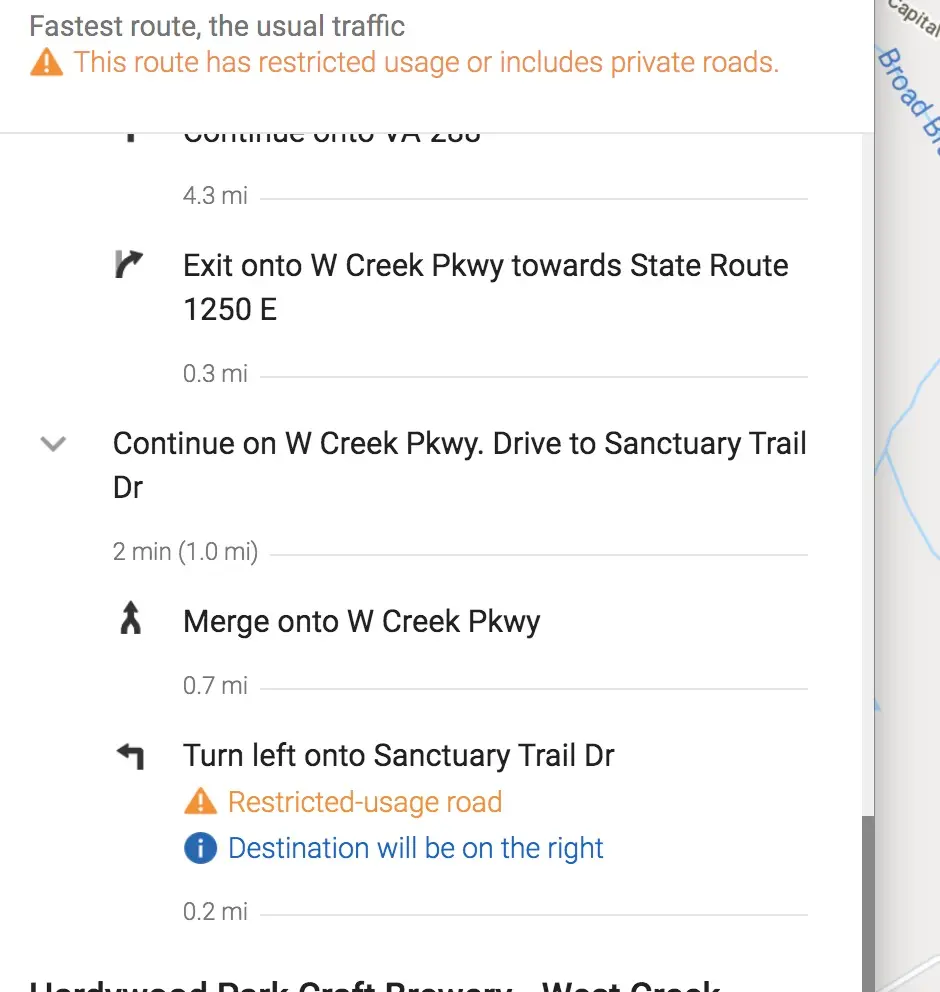If you are an avid user of Google Maps then you must have come across a few situations where you encountered strange warnings that you have never seen before.
On that note, we recently went on a drive and encountered a yellow warning sign saying that “this route has restricted usage access or private roads”.
This got me and others curious as to what it was because we had not seen this sign before on Google Maps.
So we started doing research while traveling and found a few interesting things that I would like to share with you all in this article down below.
We also found out that a lot of users were facing this problem and sharing their thoughts on online forums.
First of all, it is worth noting that when Google Maps says that “this route has restricted usage access or private roads”, it is trying to say that you might want to avoid this route.
This is because the “restricted usage access” or “private roads” are owned by someone and you could get into trouble if you enter those roads as you might be booked for trespassing.
What is a restricted usage access road or a private road?

As we mentioned earlier, a restricted usage access road or a private road is a road that is not owned by the public or the government but is developed privately and owned by them.
It is quite possible that the roads used to be public earlier and were developed by the government but were later turned into private roads for personal usage.
For example, if a road is developed by a homeowner’s association or housing cooperative or even the homeowners come together and decide that the road that is passing through their street will be private then they can do so with proper paperwork.
Who owns a private road?
Obviously, the private road is not owned by the government but is owned by a private entity or even a single person.
By definition, private road means a road that is “Owned and sustained by a private citizen, organization or enterprise rather than by a government”
There is also the 1980 Highways Act which states that the government can’t maintain a private road which includes resurfacing the road or filling potholes or gritting the road in poor weather.
How to know if it is a private road?
One question that immediately comes to mind is how to distinguish if a road we are entering is a private road.
To answer that question, most private road owners install signage such as “private road” or “no trespassing” or have guards that stop you from entering it.
It does not mean that you will not be allowed to enter a private road because if someone you know is staying inside that society then they will permit you to enter the road.
However, if you enter without permission then it can be considered trespassing and you can be penalized for the same.
What is the difference between a private road and a private street?
If we talk about the United Kingdom or the United States, there are private roads and then there are private streets.
The difference between these two is that you can visit private streets and its open to the public even though they are owned and maintained privately.
On the other hand, the private roads are owned and maintained privately but they are not open for public usage.
In this article, we have mentioned everything you need to know about restricted usage access or private roads on Google Maps.
We hope you understood the information provided in this article. If you did, feel free to share this article with others who encountered this issue on Google Maps.


Interesting. What if the “restrict access” label is wrong. What if it neglects a valid right of way on or crossing the “restricted access”. Have to assume Google cannot enforce compliance with “restricted access” when there are legal documents that show it is not!